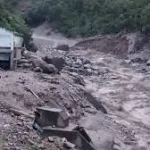Hospital Phobia (Nosocomephobia) is a very common fear; people often think the worst is going to happen. Is this kind of Iatrophobia (the actual medical term for fear of doctors) or Nosocomephobia justified? Of course, hospitals can also symbolize the most beautiful aspects of humankind, millions of people are treated /cured harmlessly daily in hospitals, can be very inspiring but equally true millions of people die each year from medical errors and hospital acquired infections.
Preventable health care harm is a public health crisis and assurance on patient safety requires a coordinated team effort, an independent validation. Sadly, except for one private hospital, no state run hospital is NABH accredited. “Best Practices in a Culture of Safety”, I recently attended the conference on this issue. This event brings a variety of health care Quality professionals together for a systematic approach to improving quality healthcare services especially in low and middle-income countries, where going into hospital is far riskier than flying.
Healthcare is often compared to other complex, high-risk systems, such as the nuclear or offshore industries. But there are striking differences. If you were admitted to hospital tomorrow in any country… your chances of being subjected to an error in your care would be something like 1 in 10. Your chances of dying due to an error in health care would be 1 in 300.This compared with a risk of dying in an air crash of about 1 in 10 million passengers. Assuredly, flying is the safest way to travel; the number of fatalities has fallen from approximately 450 to 250 per year. This stands in comparison to healthcare of advanced countries, where in there are an estimated 440,000 people die every year from preventable medical errors, which amounts to the equivalent of almost three fatal jumbo jet airline crashes per day. As of 2016, preventable medical errors are considered the third leading cause of death in the USA, behind only heart disease and cancer. Casualties of such magnitude if happen in aviation, airlines would stop flying, airports would close; there would be an inquiry commission. No one would be allowed to fly until the safety is re-assured, sadly our HCO lack such sensitivity and response.
A distinguished medical researcher, once asked why doctors kill more people than airline pilots, came up with a number of causes for this apparent discrepancy – such as the system requirement that pilots take time off for sleep, undergo random breath-testing, use check list, that their skills are tested every six months, pilots don’t just get up and leave mid-flight, a supervisory watch dog like IATA, zero tolerance for negligence, no compromise on safety even on slightest doubt. But he saved his harshest comment until last: ‘If doctors died with their patients, they’d take a great deal more care”. High-risk industries have achieved exemplary safety performance, this write-up reviews how they have managed to do that, learn from them and applying their safety lessons to our own health care.
Over the past 10 years, debates on global health have paid increasing attention to the importance of safe health care systems, which encompass the institutions, organizations, and resources (physical, financial, and human) assembled to deliver health care services that meet population needs. The greatest danger to our planet is the belief that someone else will save it. Health care is problem prone, high risk, high volume area to serve populated with high tech equipment, devices, and technologies, and diversified attitudes even the best doctors are liable to make mistakes so the emphasis on safety should be focused on prevention rather than detection.
Being aware of the fear is very important, and once you’re aware of the fear, you can address that fear. If you think of circumstances despite your best intentions you made a mistake that affected someone else. Was it impossible to get it right? But what prevents mistake to become a harm or a sentinel event, a system of mistake proofing in place, which could have kept you alerted or stopped you from making that mistake.
Quality tools and strategies can be used for making changes in the physical design of the work environment and processes to reduce the chances or prevent errors from occurring, or to detect errors after they occur but before harm occurs (near misses). Effective mistake proofing design changes should initially be effective in reducing harm, be inexpensive, and easily implemented. Over time these design changes should be routine in the care giving.
As a Quality expert and Risk manager on safety, if your healthcare organization doesn’t have a culture that values teamwork, accountability, and an environment that doesn’t encourage speaking using OVR‘s (observation variation incident accident reporting), then you’re at risk. Most of the times our dedicated doctors are often blamed unnecessarily in an imperfect system, where each evening ED is scene like of an overcrowded outsource camp, every miscreant claiming proximity to powerful politicians threatens the overburdened staff creates indiscipline along with lack of resources on essential equipment’s, bed management, and human power without written SOPs. I blame ‘the system’ for causing errors. What would our hospital administrators in such a situation do when the bold decision on patient overflow management comes from higher up with implications of vote bank politics?
Safety should be always a primary concern in everything we do in the hospital every decision that is made, from the time patient steps in at causality door whether it’s administrative, budgetary, clinical or otherwise.
For achieving affordable and sustainable healthcare, untiring efforts by present and past Director’s and Principals of our healthcare organizations for bringing and sustaining improvement in standards of care need cooperation, coordinated team work from all stake holders. The main problem of “patient overload “and policy on workable restrictive “referral system “, safe transport by ambulances remains unaddressed. The slow uptake of good ideas from experts, plus incentive problems in service delivery continue to be shortcomings in bringing improvement. Understandingly, it’s impossible to address every aspect of patient safety at once, better patient safety doesn’t just happen; we all have a role in making it happen….it is never one man show.
Let us get started today. Where are we now? Where do we want to be? How do we get there? The good news is that healthcare professionals can, and do learn from the aviation industry’s considerable body of knowledge about the limits of human and equipment performance, the risks that result and the potentially catastrophic consequences. For low and middle income countries where scarcity of resources (funds/ human) is the biggest challenge our group is working on a model with an international agency on Quality improvement by setting KPIS for eight major departments of hospital ED: OPD; Inpatient; OT; Lab;Radiology; Infection control; Disaster management without extra funds and manpower ,which has yielded good encouraging results.
By using the model of aviation or any other model for improvement tuned to local conditions and resources, let us introduce process changes to yield effective, efficient, and safe delivery of health care for our people. There is no one blueprint for an ideal health care system, nor are there any magic bullets that will automatically elicit improved performance– Just take a step forward and keep moving towards your goal.
The key to making safety and quality a priority at hospitals is by redesigning patient care to improve patient experience. A framework for safe, reliable, and effective care provide clarity and direction to health care organizations (HCO) by implementing evidence-based practices, and adoption of Aviation model – An agenda for action.
(Author is a Surgeon and TQM specialist, expert on Healthcare policy and Reforms, Hospital performance improvement programs. Feedback: [email protected])








